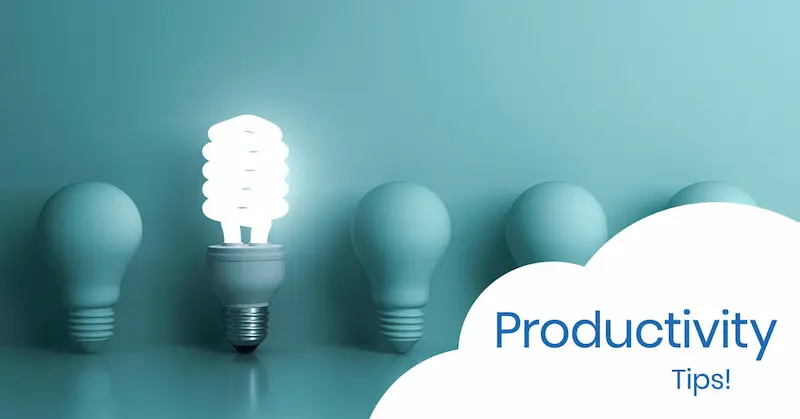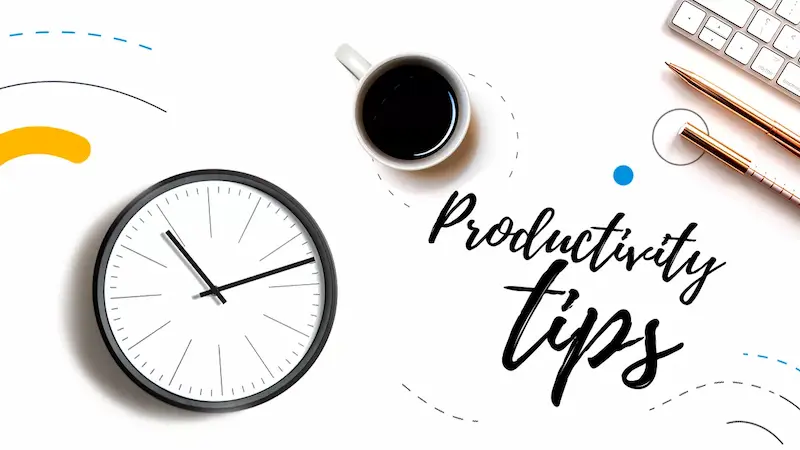Productivity is more than just a buzzword; it’s a key driver of success in both our personal and professional lives. In a nutshell, productivity is the art of accomplishing more with less effort. It’s about efficiently using your time, energy, and resources to achieve your goals and make the most of your life.
Table of contents
The Significance of Productivity Increase
Imagine having extra hours in your day to pursue your passions, spend time with loved ones, or tackle new challenges and follow positive habits. Boosting productivity isn’t just about doing more; it’s about reclaiming your time and follow the best work-life balance tips and achieve it.
It can lead to career advancements, career growth, improved mental well-being, and a sense of accomplishment.

The Psychology of Productivity
1.Understanding Motivation
Motivation is the fuel that propels productivity. To stay motivated, try to follow good habit for students, it’s crucial to set clear goals and remind yourself why you want to achieve them. Visualize your success, break down large tasks into smaller steps, and reward yourself for milestones reached.
2.Overcoming Procrastination
Procrastination is the enemy of productivity. Combat it by starting with small, manageable tasks to build momentum, setting deadlines for yourself, and eliminating distractions. Remember, the hardest part is often starting.
3.Building Productive Habits
Habits shape our daily routines. Develop habits that align with your goals, such as waking up early, exercising regularly, and dedicating time to focused work. Consistency is key in turning productivity into a habit.
20 Tips for Productivity
- Set Clear Goals: Establishing well-defined objectives helps you stay focused and motivated. Break down these goals into smaller, actionable steps to create a clear roadmap toward achievement.
- Prioritize Tasks: Determine which tasks have the most significant impact on your goals and tackle them when your energy and concentration are at their peak.
- Time Blocking: Allocate specific time blocks for tasks, enabling better time management and concentration on individual activities.
- Use a To-Do List: Writing tasks down helps you visualize your workload, stay organized, and experience a sense of accomplishment as you complete them.
- Limit Multitasking: Focusing on one task at a time enhances productivity and reduces stress, as it allows you to dedicate your full attention to each task.
- Take Regular Breaks: Short breaks refresh your mind, improve creativity, and prevent burnout. Incorporate these intervals into your daily routine.
- Delegate Wisely: Delegating tasks to others when possible frees up your time for more critical responsibilities, fostering efficiency.
- Stay Organized: A tidy workspace and digital tools help you manage schedules, files, and notes effectively, reducing clutter and boosting productivity.
- Use Technology Tools: Productivity apps and software streamline tasks like project management and communication, saving time and effort.
- Practice the Pomodoro Technique: Working in focused intervals followed by short breaks can maintain high productivity levels and reduce fatigue.
- Set Realistic Deadlines: Setting achievable deadlines prevents overcommitting and ensures you can deliver high-quality work within a reasonable timeframe.
- Eliminate Distractions: Identify and minimize environmental distractions, such as turning off notifications, to maintain focus.
- Learn to Say No: Politely declining additional commitments that don’t align with your goals prevents overextending yourself and preserves your productivity.
- Improve Communication: Effective communication skills reduces misunderstandings, streamlines discussions, and saves valuable time.
- Invest in Self-Care: Prioritizing sleep, nutrition, and exercise ensures you have a healthy mind and body, leading to increased productivity.
- Continuous Learning: Staying updated in your field and acquiring new skills keeps you competitive and adaptable to changing environments.
- Use Templates and Checklists: Creating templates and checklists for recurring tasks simplifies processes, reduces errors, and saves time.
- Seek Feedback: Regular feedback from colleagues or mentors helps identify areas for improvement and enhances your performance.
- Celebrate Achievements: Acknowledging even small accomplishments boosts motivation and confidence, encouraging continued productivity.
- Reflect and Adjust: Periodically reviewing your productivity strategies allows you to make necessary adjustments to stay on track and meet your goals effectively.
Measuring Productivity
Quantitative and Qualitative Metrics
To gauge your productivity, use both quantitative metrics (e.g., completed tasks, time spent on projects) and qualitative metrics (e.g., client satisfaction, quality of work).
- Quantitative Metrics: These are numerical measurements, such as the number of tasks completed, hours worked on a project, or the time spent on specific activities. Quantitative metrics provide a clear, objective way to track your productivity.
- Qualitative Metrics: These metrics are more subjective and focus on the quality of your work or the impact of your efforts. Examples include client satisfaction, the quality of deliverables, or how well you met your objectives. Qualitative metrics help you understand the value of your productivity.
Self-Assessment Tools
These are tools or techniques that help you evaluate your own productivity, often through surveys or questionnaires. They can provide insights into your strengths and areas where you may need to improve, offering a more holistic view of your productivity.
There are various productivity assessment tools and techniques available online. Consider using them to gain insights into your strengths and weaknesses.
Conclusion
Boosting productivity is an ongoing journey that requires self-awareness and commitment. By implementing these 20 tips and continuously refining your approach, you can transform your personal and professional life, achieving more with less effort and enjoying the fruits of your labor. Remember, the road to productivity is not about perfection; it’s about progress. So, take that first step today and watch your productivity soar.
To get your hands on more such educational, parenting and free resources on coding, robotics, game development, etc., do check out the Brightchamps Blog Page now!Join the revolution in education with Brightchamps. Our courses in robotics, coding, and financial literacy empower kids to become confident and capable learners.
Frequently Asked Questions (FAQ’S)
A1. The timeline for significant productivity improvements varies from person to person. Some individuals may notice positive changes in a matter of weeks, while others might take a few months to establish new habits and see substantial results. The key is consistency and patience. Productivity improvements often come as you integrate new strategies into your daily routine and adapt them to your specific needs and goals.
A2. Technology plays a significant role in enhancing productivity by offering a wide range of tools and software designed to streamline tasks, improve communication, and manage time efficiently. These tools can help with task organization, automation, data analysis, and collaboration, ultimately boosting productivity across various domains. However, it’s essential to use technology mindfully to prevent digital distractions and maintain a healthy work-life balance.
A3. Productivity is a skill that anyone can develop with the right mindset and strategies. While some individuals may seem naturally more organized or efficient, productivity is not an innate trait reserved for a select few. It’s a learned skill that can be cultivated through practice, self-awareness, and a willingness to adapt and improve. With dedication and consistent effort, anyone can become highly productive.
A4. Balancing productivity and well-being is essential for long-term happiness and success. To achieve this balance, establish clear boundaries by defining specific work hours and sticking to them. Prioritize self-care by scheduling time for rest, exercise, and relaxation. Utilize productivity techniques like the Pomodoro Technique to maintain focus during work hours. Practice mindfulness to stay present and avoid overthinking tasks during your downtime. Additionally, don’t hesitate to seek support from colleagues, friends, and family, and communicate your need for balance to ensure a harmonious work-life equilibrium.
A5. Remote work presents both unique challenges and opportunities for productivity. To excel in a remote work environment, create a dedicated workspace that is separate and organized. Establish a daily routine with consistent work hours to provide structure to your day. Effective communication is vital; stay in touch with your team and make efficient use of collaboration tools. Take regular breaks to prevent burnout, and set clear boundaries to define the distinction between work and personal life. Implementing these remote-specific productivity strategies will help you thrive while maintaining a healthy work-life balance.


 We are an army of educators and passionate learners from BrightChamps family, committed to providing free learning resources to kids, parents & students.
We are an army of educators and passionate learners from BrightChamps family, committed to providing free learning resources to kids, parents & students.














